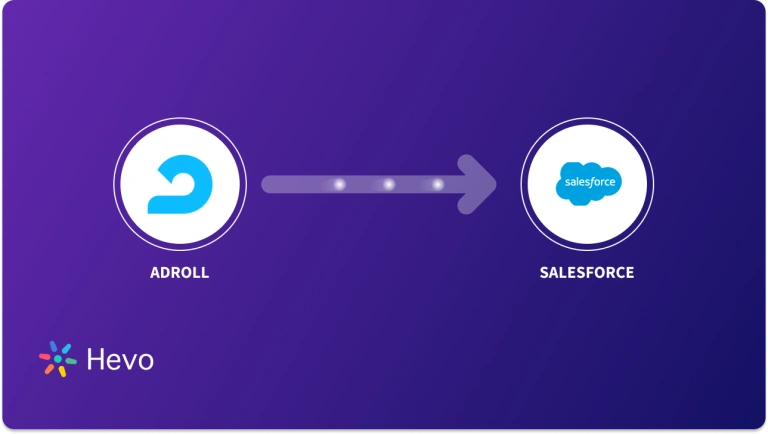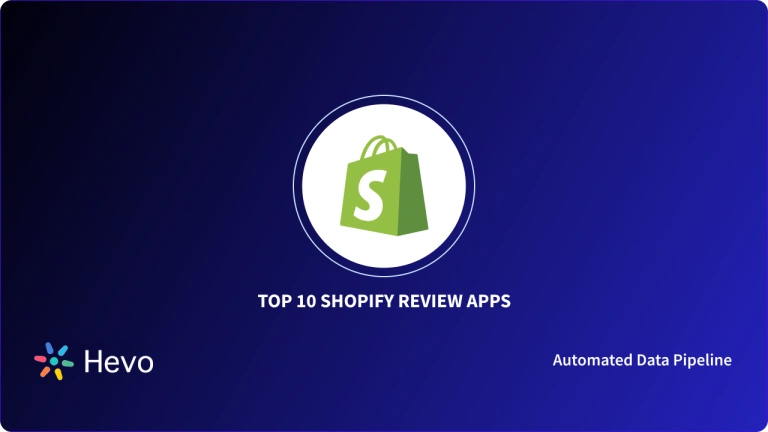Corporations prioritize focusing on the key performance indicators (KPIs) that positively influence their business by integrating their in-house data with marketing platforms.
In this dynamic environment, it becomes essential to connect the advertising platform to the e-commerce solution to leverage the power of advertising in selling new products to existing customers.
AdRoll Shopify integration provides the capability of enhancing customer experience, focusing on maximizing revenue growth.
Table of Contents
Overview of AdRoll
AdRoll is a performance marketing platform that helps businesses reach and re-engage customers across various digital channels.
Key Features:
- Creative Optimization: Test and optimize ad creatives to improve campaign performance.
- Retargeting: Show ads to users who have previously visited your website or interacted with your brand.
- Audience Targeting: Reach specific customer segments based on demographics, interests, and online behavior.
- Cross-Channel Advertising: Run campaigns across multiple channels, including display, social media, and mobile.
- Performance Analytics: Track key metrics like website traffic, conversions, and return on ad spend (ROAS).
Overview of Shopify
Shopify is a leading e-commerce platform that empowers businesses of all sizes to sell online and in-person.
Key Features:
- Mobile Commerce: Mobile-friendly stores and a mobile app for managing your business on the go.
- Easy Store Setup: User-friendly interface with customizable themes to quickly create online stores.
- Product Management: Tools for managing product catalogs, inventory, variants, and pricing.
- Order Fulfillment: Integrated order processing, shipping, and fulfillment solutions.
- Payment Processing: Secure and integrated payment gateways for seamless transactions.
- Marketing Tools: Built-in marketing features like email marketing, social media integration, and SEO optimization.
You can build impeccable Shopify dashboards to interpret conclusions and reports from your data.
Seamlessly integrate your AdRoll and Shopify data for a unified view of customer interactions. Hevo’s no-code platform empowers teams to:
- Integrate data from 150+ sources(60+ free sources).
- Simplify data mapping and transformations using features like drag-and-drop.
- Easily migrate different data types like CSV, JSON, etc., with the auto-mapping feature.
Join 2000+ happy customers like Whatfix and Thoughtspot, who’ve streamlined their data operations. See why Hevo is the #1 choice for building modern data stacks.
Get Started with Hevo for FreeHow to Integrate AdRoll to Shopify Using CSVs
If you are wondering how to connect AdRoll to Shopify, follow the method below to connect and load data from AdRoll to Shopify.
Let’s look into the steps to save AdRoll to Shopify using a CSV file transfer.
Step 1: Export Data from AdRoll in CSV Format
To move your data from AdRoll to Shopify, you will need to access the data from your AdRoll ID. You can follow the procedure given to export data from your AdRoll ID.
- First, you need to log in to your AdRoll account to access the data report.
- AdRoll provides you with multiple reports that you can access, allowing you to focus on the primary groups that benefit your business; among these reports, there are several features that you can import to your Shopify account. Here are some of the reports:
- Ad Placements by Campaign: Websites where your products are marketed.
- Ad Performance by Country: Mentions spend, clicks, impressions, and conversions.
- Ads: Performance of Ads.
- Campaigns and many more.
- You need to customize a new report according to your needs so that the exported data will be suitable for Shopify. In your AdRoll account, select Campaign Reports in the left navigation pane.
- The Reports Library contains the reports you can access, download, customize, and schedule.
- You can preview the metrics included in a report and how to use them by clicking the info icon next to the report name.
- You can make any desired changes in the report by choosing set-up the report. Using this feature, you can customize the columns, filters, and grouping of the report.
- Select Columns to modify the report metrics. You can also customize the report by adding new columns and adjusting the order of columns in which you want to download your report.
- You can also select Group By to customize the data granularity of your report.
- Click on the Actions dropdown and select Export to export your report or Schedule to schedule your report.
You can follow these easy steps to export your AdRoll data. To learn more about the process, refer to the steps in customize a report.
Step 2: Import the CSV Data into Shopify
After exporting the data from AdRoll, you can import it into Shopify by making some changes and converting the data into a suitable format that is Shopify-compatible. You can download the custom CSV template for Shopify, look into how the data is formatted and framed, and check out the description of the columns.
Prerequisites
Here are some prerequisite conditions that you must ensure before importing the data into Shopify.
- The first line of the CSV file needs to be a header row, and you can refer to the CSV template provided; your data must match the row header.
- It is necessary to mention the Email column.
- The file header is not case-sensitive.
- The Total Spent and Total Orders are not mentioned in the imported CSV.
- The maximum data size of a file can only be 15 MB. If your file has more data than that, make sure you split it first.
- You cannot migrate customer passwords from other online stores using CSV format.
- You can add columns to your CSV file for some supported metafields. You can also create your own meta field.
- You must know that the order information cannot be imported here in this case; you can refer to order information to know more.
After reading through the prerequisites and ensuring that the imported data is of a compatible format, follow the steps below to import data to Shopify.
- Click Import > Add file, then select your CSV file.
- Click Import customers.
By following these steps, you can load AdRoll file to Shopify. To know more about importing files in Shopify, you can refer to the import/export customer list.
After importing your data to Shopify, if you want to conduct an advanced analysis of the data, you can integrate Shopify into BigQuery, import data from Shopify to Redshift, or choose your preferred platform.
Limitations
Despite the multiple benefits of AdRoll Shopify integration, there are certain limitations that you must keep in mind to get the best out of what you have. The limitations of this method to import Adroll to Shopify are as follows:
- Lack of Automation: This method requires manual efforts to move data from Adroll to Shopify; it lacks the ability to automate the flow of data transfer.
- Time Consumption: This process requires your full effort, from extracting data from AdRoll to loading the data to Shopify. Following the required steps might lead to considerable time consumption.
- Technical Knowledge Requirement: This process assumes you have prior technical knowledge to transform data from its raw format to a Shopify-compatible format.
- Lack of Real-time Integration: This method lacks real-time data integration features and requires continuous monitoring as you move data from AdRoll to Shopify. Such a limitation restricts real-time data analytics for improved operational efficiency.
Use Cases of AdRoll Shopify Integration
- Better Product Recommendations: With AdRoll Shopify integration, you can provide better recommendations to your customers. AdRoll’s segmentation process enables you to divide your customers based on their product attraction.
- Customer Segmentation: This method lets you focus on each customer’s likes and dislikes. It also enables better product reach to a potential customer audience.
- Retargeting Customers: By loading AdRoll data to Shopify, your business can retarget the available customers based on their previous purchases and clicks on the website.
Conclusion
AdRoll Shopify integration provides multiple benefits. However, while considering the positive points, you must also consider the drawbacks in order to maximize the efficiency of using the method mentioned in this blog. This method allows you to easily transfer your data from AdRoll to Shopify.
Integrating AdRoll with Shopify can help you understand your customers’ segmentation, enhance your business approach, and increase your profit margin while maintaining good customer relationships.
Sign up for a 14-day free trial and connect Adroll or Shopify easily. If you want to connect your AdRoll data to some other destination, you can refer to the articles mentioned here:
Frequently Asked Questions (FAQs)
Q1. How do you import large amounts of data to Shopify?
The CSV import method is efficient in importing multiple data values to Shopify; however, you must carefully consider the steps involved. Follow the format in the sample CSV file, and format your data accordingly.
Q2. What is the best retargeting app?
Using AdRoll on client sites provides one of the best ROIs. Although there are many applications that you can use, AdRoll is one of the best.












